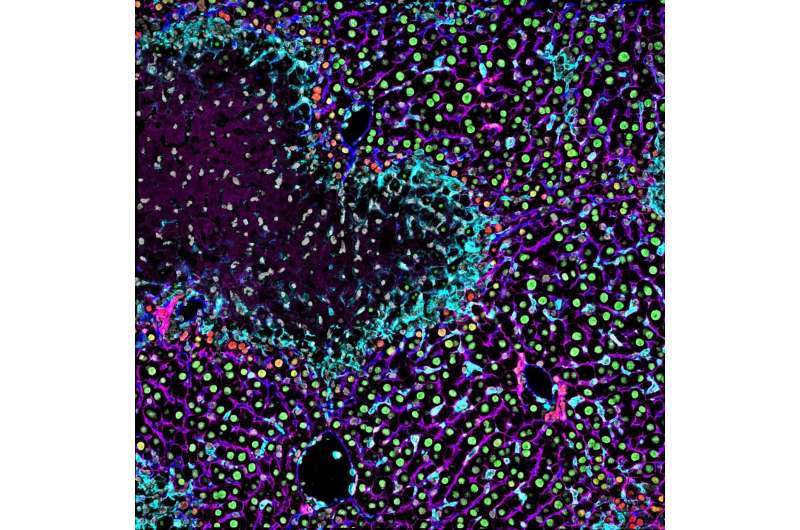This article has been reviewed according to Science X's editorial process and policies. Editors have highlighted the following attributes while ensuring the content's credibility:
fact-checked
peer-reviewed publication
proofread
Monocyte-derived macrophages could be central to liver regeneration

The liver is a vital organ that plays a role in many essential functions, including digestion, detoxification, and metabolism. When the liver is damaged, it has the remarkable ability to regenerate itself. However, the process of liver regeneration is not fully understood.
A critical aspect of liver regeneration is removing dead tissue and necrotic lesions. In a recent study published in the Journal of Clinical Investigation, Feng et al. showed that monocyte-derived macrophages (MoMFs) play a crucial role in this process. MoMFs are a type of white blood cell that is recruited to the liver in response to injury. Once in the liver, MoMFs engulf dead cells and other debris. They also release chemicals that promote the healing process.
The researchers found that MoMFs undergo dynamic changes as they work to remove necrotic lesions. In the early stages of liver regeneration, MoMFs are pro-inflammatory. This means that they release chemicals that kill bacteria and other harmful invaders. However, in the later stages of liver regeneration, MoMFs become anti-inflammatory. This means that they release chemicals that promote healing and tissue repair.
The researchers also found that MoMFs interact with other cells in the liver to help remove necrotic lesions. For example, MoMFs interact with hepatocytes (liver cells) to help them regenerate. MoMFs also interact with stellate cells (liver cells that produce collagen) to help them form a scar around the necrotic lesion.
The authors also found that similar mechanisms are involved in the resolution of necrosis in other models of liver injury, such as Klebsiella pneumoniae infection and ischemia/reperfusion. However, a different mechanism is likely in place in hepatotoxin/drug-induced liver injury models, such as carbon tetrachloride and acetaminophen.
The findings of this study suggest that macrophage-based immunotherapy approaches targeting hepatic necrosis could be a promising new treatment strategy for various liver diseases. For example, autologous macrophage therapy for liver fibrosis is already being investigated.
Clinical trials are needed to evaluate the safety and efficacy of macrophage-based immunotherapy approaches for treating hepatic necrosis. However, the findings of this study provide a strong foundation for developing these new therapies.
More information: Dechun Feng et al, Monocyte-derived macrophages orchestrate multiple cell-type interactions to repair necrotic liver lesions in disease models, Journal of Clinical Investigation (2023). DOI: 10.1172/JCI166954
Journal information: Journal of Clinical Investigation
Provided by First Hospital of Jilin University

















